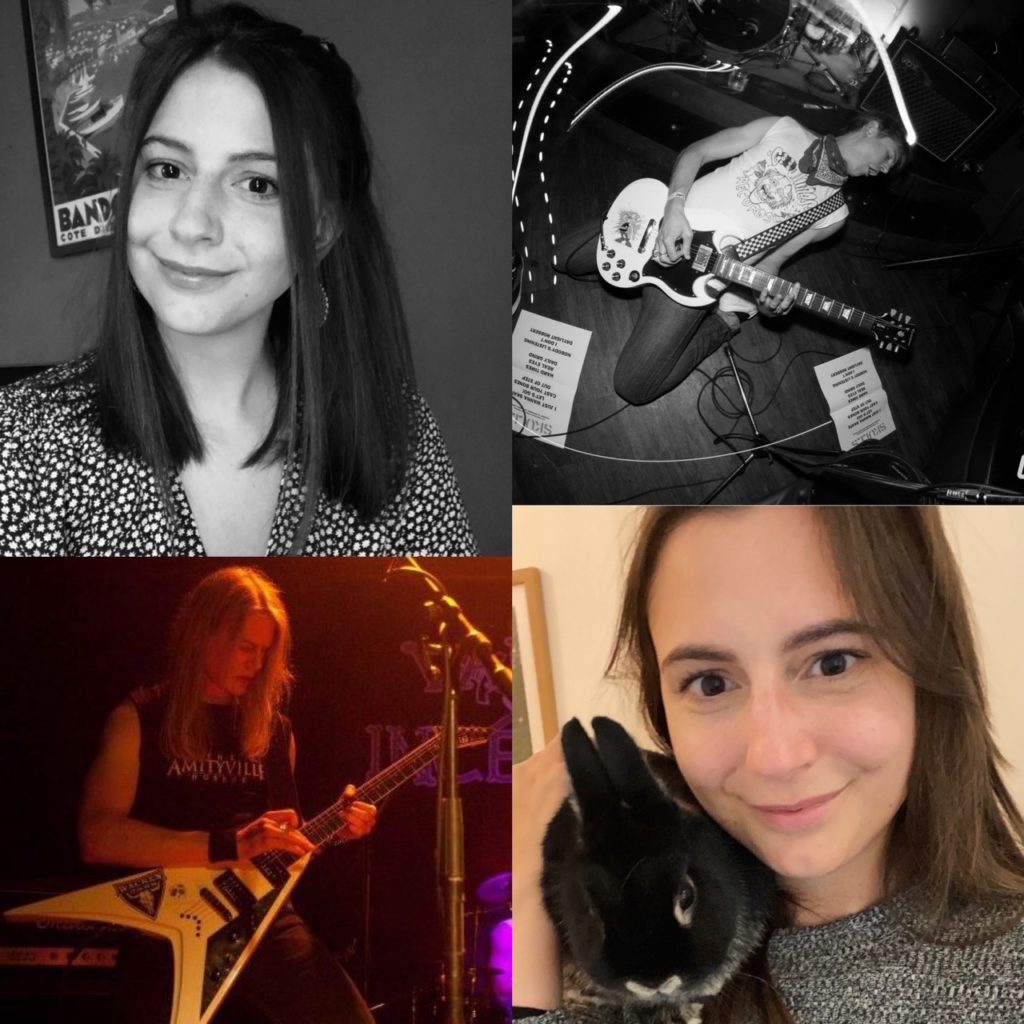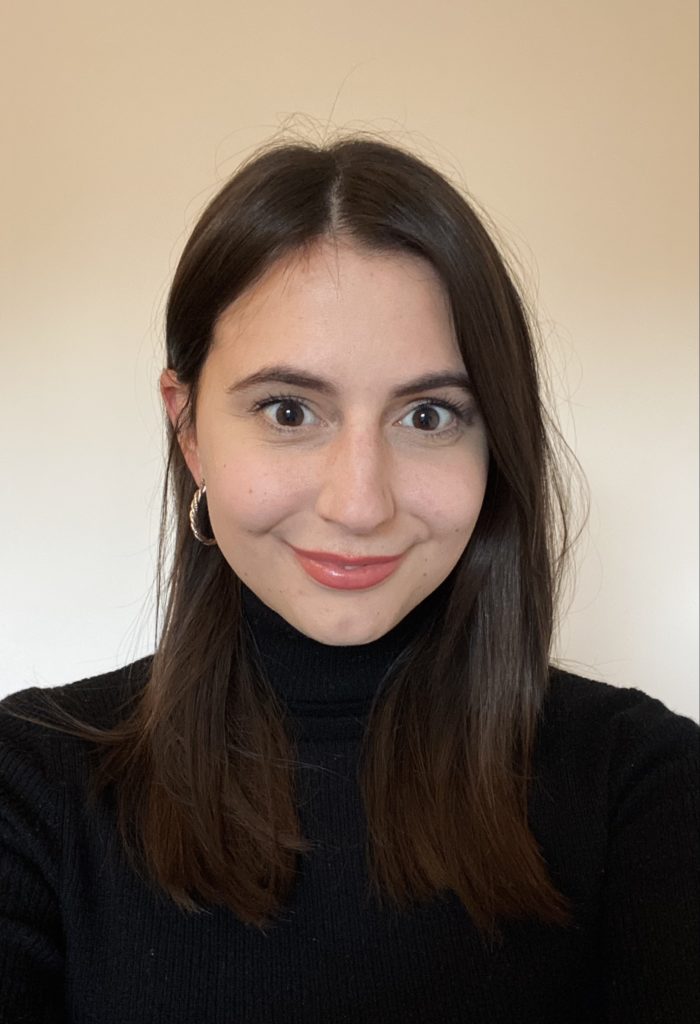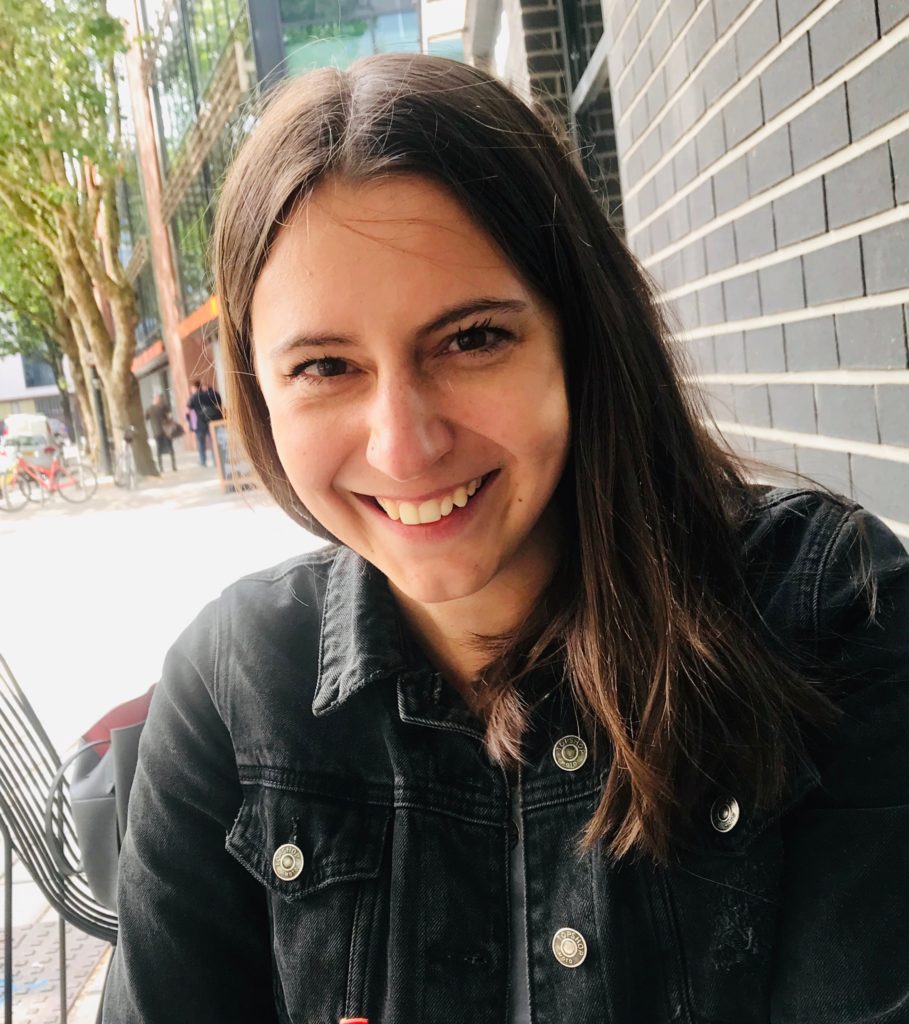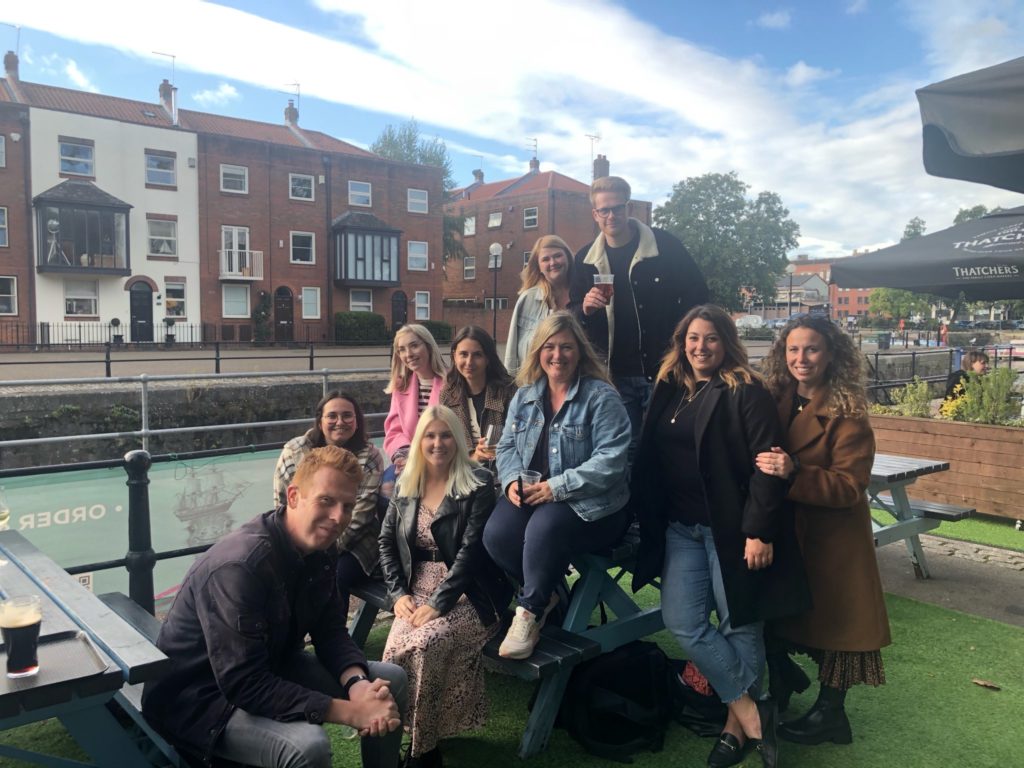Midweight, metal and mark-making – the upward trajectory edit
Written by Eleanor WillockThe latest in our pairing pieces, where two new colleagues ask questions they really need the answers to, sees our Mantis Account Director Lily Smit speak to our Ruder Finn Midweight Designer, Ross McGuire. And yes, yes, yes, Lily’s first question to Ross is the one 99% of readers have probably always wanted to ask. Warning: this content was written by at least one creator wearing incredibly tight spandex pants.
Ross to Lily: You were promoted to Account Director at the beginning of this year, what has been some highlights in this new role for you so far?
I think over the past year I’ve been allowing myself more time and space to focus on bigger picture stuff, it’s been more about aiming for meaningful results, rather than just ‘getting stuff done’ which is an easy trap to fall into. I think I’m quite a creative person, so I really enjoy storytelling strategy, it allows me to indulge in my guilty pleasure which is staring at a wall and thinking.
Overall it’s the mindset shift that’s been interesting. Like a lot of people, I sometimes struggle to have conviction in my decisions, and I’ve really noticed a difference in the last year in that easing a bit – it was like a little switch clicked and I learnt to trust myself more. Being promoted takes that to the next level again and problem solving becomes that little bit simpler.
I went to my first in person pitch the other day since the beginning of the pandemic, and I could measurably feel the difference in the role I played in the real-life pitch room since the last time, which was probably well over two years ago. That was a nice feeling.
Ross to Lily: As a very special first brick in the wall of Mantis Bristol, what has been the most rewarding challenge in helping to develop the Bristol office?
Firstly, finding our space in the city, both figuratively and physically – we had to tour a lot of co-working spaces, some of them questionable. The tech scene in the South West has really burgeoned in the last four years since I’ve been at Mantis, and as a result so have the opportunities to work in creative spaces and attend events with good networking opportunities and knowledge sharing, such as Bristol Tech Festival. We hosted a panel discussion for the festival in 2020, with the aim of being one of the purveyors of bringing public sector challenges into the consciousness of the tech community in the region. Financial investment in the public sector has grown in the South West recently, so it was an excellent time to bring together our contacts in the region and get them talking – it felt like we were making our mark.
I also have to mention the recruitment of the rest of the Bristol team, who are such a fun and talented bunch. Before we had our Bristol office, I was new to the city and working from home completely – which looking back, was quite a lonely experience. It bought me so much joy to have a team close by, although we’ve not had the same opportunity to meet up lately because of Covid and because I made the rogue decision to go and live in Bath.
Ross to Lily: You’re a fellow aficionado of ‘terrible’ Hair Metal. What’s the fist pumping rock anthem you’d pick to ignite your Monday morning?
This is genuinely the hardest question I’ve ever been asked. I’m going to pick two: Def Leppard, Pour some sugar on me, and Mötley Crüe’s Dr. Feelgood. Hair Metal is mainly a visual love for me though, I need to have eyes on the skin-tight outfits and towering hair or it’s not the same.
Lily to Ross: What exactly is a mid-weight designer, and what career steps lead up to it?
A mid-weight designer is focused on owning the creative development of a project and is integral to defining the creative outcome of them. They create work to a high standard, with the skills and experience acquired to come up with at least 2-3 strong concepts for any given brief. As they will be at least two years into their career, a mid-weight designer will have a clear understanding of the principles and elements of design, have a sophisticated eye for typography, fine attention to detail, knowledgeable on the programmes they use and should know the ‘hot keys’ for quick efficient workflow, and can take control of the final art process and ensure their output files are set up correctly with no errors.
The steps to get anywhere in a career I think are particular to the individual and their own journey. Starting out as a junior I worked in small three person design teams in marketing and corporate roles, where a lot of my workflow was production based, given key visuals from the senior designer to roll out all manner of print and digital assets, along with creating client presentations, coming up with product mockup visuals in Photoshop, and in my corporate role I created all manner of internal documents and financial reports featuring lots of data tables, infographics, and graphs and charts which were signed off by the NZ Government. I started to lead more creative driven projects as well and would do a project from concept sketches through to final art.
I’ve also spent a number of years as a freelance designer and this was invaluable to my career progression. I worked in a number of terrific advertising agencies and creative studios in Auckland and came in when there was work overflow and a need for an extra set of hands on the tools. I needed to get my head around different brand guidelines, filing conventions, different servers, and different teams. I needed to be the guy who could come in and essentially smash out a pile of work with a team that was already under the pump with work, and be trusted to do the work right and tight. I worked at one particular set of agencies, 99 and Raydar, for the majority of my freelance years, on many different placements ranging from a few weeks to a few months which would roll onto to most of the year, based purely on my knowledge of their wide variety of brands, tenacity, and can do attitude. I became known as ‘a piece of the furniture’ cause I was there so much.
In my last role before I moved here to the UK, I was the only designer in the marketing team, and drew upon all my knowledge and experience to drive projects from initial briefings from the comms team through to final art. This role elevated me as a designer because it was up to me to make all the creative decisions. There was no other designers to bounce ideas off.
Lily to Ross: Which designers or artists influenced you when you were starting out?
Arturo Vega, Jerry Only and Glenn Danzig, Raymond Pettibon, Winston Smith, Jamie Reid, Shepard Fairey, Jack Kirby, Jack Davis and Lee Falk (Kings of Comics), Uderzo & Goscinny, Herge, Andy Warhol, Roy Lichenstein, Wes Wilson, Karoly Grosz, The Brothers Hildebrandt, Ralph McQuarrie, Basil Gogos, Boris Vallejo, Julie Bell, Alphonse Mucha, Gustave Dore, John Dyer Baizley, Paul Romano, Jamie Saint Merat, Derek Riggs, Ed Repka, Rob Zombie, Tim Jacobus, Frank Frazetta (eternal hails), Pushead, skating mags like Thrasher and Slap, Juxtapoz Mag, Robert Williams, Jim Davis,Mark Gonzales, Walt Disney, Studio Ghibli Inc, Dick Frizzell and Billy Apple.
Lily to Ross: What’s your favourite metal themed movie and why? (I have one in mind that I really really hope it is!)
I’ve thought about this one quite a bit. There’s a lot of really terrific movies that are metal themed. Spinal Tap is the ultimate classic, along with other cult ones such as Trick or Treat, and Deathgasm. My pick of the bunch is definitely Rock Star from 2001, which stars Mark Wahlberg and Jennifer Aniston. It tells the story of Chris “Izzy” Cole, a tribute band singer who ascended to the position of lead vocalist of his favourite band, Steel Dragon. It inspired by the real-life story of Tim “Ripper” Owens, singer in a Judas Priest tribute band who was chosen to replace singer Rob Halford when he left the band in the 90s.
Why is it my favourite? Cause Steel Dragon is comprised of actual Metal musicians. Zakk Wylde (Black Label Society/Ozzy Osbourne) shredding it on guitar, Mick Brown (Dokken) on bass, and Jason Bonham (better known as the son of John Bonham from Led Zep) on drums. The vocals aren’t Mark Wahlberg but Jeff Scott Soto (LOTS of 80s bands). The soundtrack absolutely kills. ‘Livin the Life’, ‘Wasted Generation’, ‘We All Die Young’, ‘Blood Pollution’ and ‘Stand Up’ all hold up today and kick serious ass.
Also they completely sass Mark Wahlberg in the credits, because kids, let’s never forget that before he was screen actor Mark Wahlberg, he was Marky Mark, from Marky Mark and The Funky Bunch. And his other actor brother Donnie Wahlberg is from New Kids On The Block.




